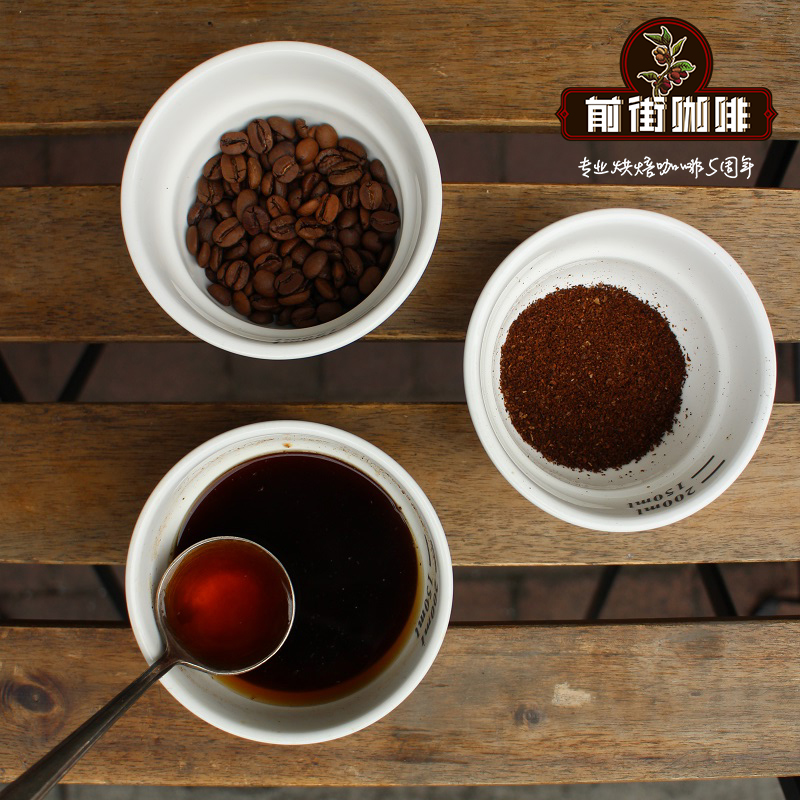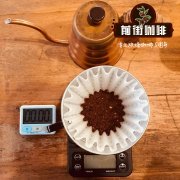Burundian Coffee Guide-Burundian Coffee producing area introduction _ how to buy Burundian Coffee beans

Professional coffee knowledge exchange more coffee bean information please follow the coffee workshop (Wechat official account cafe_style)
Exquisite Burundian single source coffee has a clean, delicate taste, rich body and acidity, according to cupping notes. Coffee reviews show that Burundian coffee has a sweet berry flavor, with floral and berry-like aromas.
Region: Kayanza
Planting altitude: 2000 m
Variety: bourbon
Harvest time: March-June
Grinding process: fully washed and dried on the quilt
Aroma: red currant
Taste: red fruit, jasmine, hibiscus, dark chocolate
Body: rich, creamy
Acidity: wine body
Burundian coffee beans-medium roasted
Burundian Kayanza coffee beans-medium roasted
Taste profile: the sweet and clean taste and other characteristics of Burundian coffee often lead to comparisons with coffee from neighboring Rwanda, especially in the northern Katanza region, near the Rwandan border.
Burundian coffee producing area
The Nile- peaks inland in the Congo watershed, between Burundi's small, very hilly and mountainous countries of East and Central Africa, as well as between Rwanda, Tanzania and the Democratic Republic of the Congo. The quality of coffee exported to Burundi is compared with that of its neighbour Rwanda. Other areas of Burundi include:
Sibitokai
Bubanza
Kayanza
Ngozi
Keelung
Muyinga
Karuzzi
Krimiro
Mvaro
Mulanvia
Blu.
Makamba
Along the western border of Burundi is the scenic Lake Tanganyika, the lowest point of the country is 772m above sea level, and Burundi is 2670 m above sea level, located at the top of Haha Mountain. Most of the coffee exported from Burundi belongs to strict high yield (SHG) / strict hard beans (SHB).
Coffee cultivation in Burundi
Coffee cultivation in Burundi began in the 1930s, when the Belgians brought Arabica coffee plants. Today, more than 800,000 Burundian families are involved in coffee cultivation. These small farmers have an average of about 250 trees each, and most farms also produce other crops or livestock. Because of political instability, the country's production was in trouble for some time, but exports began to level off.
About 25 million coffee plants-mainly bourbon grape varieties-are grown on more than 60000 hectares of land. The coffee planting area of the average farmer is 50-250. Robusta produces very little, but mostly Arabica coffee.
Most of the coffee in Burundi is grown between 1250 and 2000 meters above sea level, and the main coffee plant is bourbon, which is wet-treated. Burundian coffee is often compared to the general cup-shaped feature of Rwandan coffee.
Green Coffee cultivation in Burundi
Political and social unrest in the Congo has had a negative impact on coffee cultivation in neighbouring Burundi and the future of coffee cultivation in the region and the availability of quality exports remain uncertain. Brokers can still export high-quality green coffee from the region and can wholesale it on the market.
A place famous for growing coffee as well as palm oil, cotton and rice is Kivu, which is the general name of East Congo or Kinshasa. Tin and gold are also mined in the area.
Kivu spans a vast area and borders Rwanda, Burundi and Uganda. The three provinces of Kivu are Maniema,Sud-Kivu (South Kivu) and Nord-Kivu (North Kivu), which includes Kahuzi-Biega National Park, part of Maiko National Park and the Ruwenzori Mountains. East Kivu is bordered by Lake Tanganyika.
Buy Burundian coffee
Burundi is not an important participant in the global coffee market, but it is still growing and exporting large quantities of delicious coffee. Local brokers and dealers work with green coffee importers to clean up customers and bring unroasted Burundian green coffee beans to the United States and Canada. These bulk goods (45000-pound containers) are then separated by 132lb bags and sold wholesale to coffee roasters and sold to end customers.
If you are looking to buy Burundian coffee at home, we recommend that you order whole bean coffee to keep it fresh and grind them before brewing them at home. After traveling thousands of miles, the best thing you can do for these coffees is to bake them within a week of arriving at the door and drink and drink them within 2-3 weeks. Make sure the coffee is fresh and not sitting on a shelf somewhere-Amazon coffee will be placed on shipping parcels and warehouse shelves for weeks or months before it is sold-so is the coffee you buy on grocery store shelves.
In order to get a truly pure experience, we recommend that you use a pressure kettle or hand punch.
We haven't seen organically certified Burundian coffee yet, but you can sometimes find a single source in Burundi as part of Starbucks' reserve plan.
Burundian coffee roasting
The delicate flavor and balance of coffee make it ideal for medium roasting-roasting is far enough to bring out the taste without suppressing them with black barbecue or espresso. Buying fresh from the specialty craft coffee roaster of imported green coffee means that you can experience the highest taste within a few days after roasting. Burundi has the best experience as a single origin coffee, but its unique flavor makes it an important complement to any blend or brand.
Burundian coffee has become part of Starbucks' reserve plan.
END
Important Notice :
前街咖啡 FrontStreet Coffee has moved to new addredd:
FrontStreet Coffee Address: 315,Donghua East Road,GuangZhou
Tel:020 38364473
- Prev

How to cook coffee beans in Kuiyeshan, Rwanda-introduction to the information of the processing station in Kuiyeshan, Rwanda
Professional coffee knowledge exchange more coffee bean information please follow the coffee workshop (Wechat official account cafe_style) Rwanda (Republika yu Rwanda) is a country in east-central Africa, the full name of the Republic of Rwanda, is located in east-central Africa south of the equator, landlocked countries. The territory is mountainous and has the title of a country of a thousand hills. Rwanda is a backward agricultural and animal husbandry country, which is United.
- Next

Introduction of coffee beans at Gaterama Gatruma Manor in Burundi. How can Burundian coffee be made good?
Professional coffee knowledge exchange more coffee bean information please follow the coffee workshop (Wechat official account cafe_style) CREMA TREKKERS: explore MUYANGE Burundian NKONGWE HILL Nkongwe Hill,Muytange Burundian single origin Burundian coffee bean varieties introduction Burundian single-source coffee beans are natural bourbon species, grown in Gaterama processing plant
Related
- Detailed explanation of Jadeite planting Land in Panamanian Jadeite Manor introduction to the grading system of Jadeite competitive bidding, Red bid, Green bid and Rose Summer
- Story of Coffee planting in Brenka region of Costa Rica Stonehenge Manor anaerobic heavy honey treatment of flavor mouth
- What's on the barrel of Blue Mountain Coffee beans?
- Can American coffee also pull flowers? How to use hot American style to pull out a good-looking pattern?
- Can you make a cold extract with coffee beans? What is the right proportion for cold-extracted coffee formula?
- Indonesian PWN Gold Mandrine Coffee Origin Features Flavor How to Chong? Mandolin coffee is American.
- A brief introduction to the flavor characteristics of Brazilian yellow bourbon coffee beans
- What is the effect of different water quality on the flavor of cold-extracted coffee? What kind of water is best for brewing coffee?
- Why do you think of Rose Summer whenever you mention Panamanian coffee?
- Introduction to the characteristics of authentic blue mountain coffee bean producing areas? What is the CIB Coffee Authority in Jamaica?

